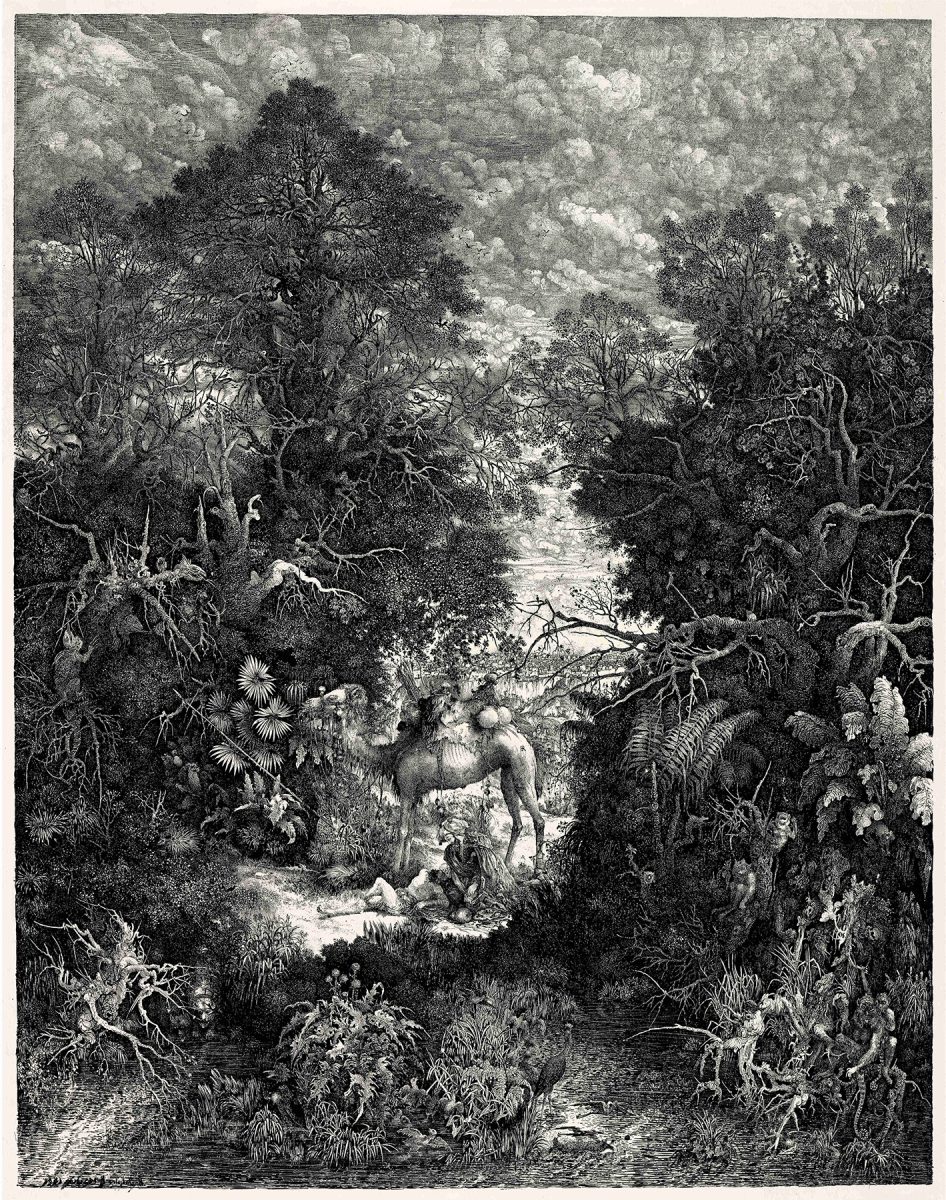Bresdin's prints could not fail to fascinate the artists of the Atelier de Saint-Prex, for both their imaginative power and their obvious technical achievement. Edmond Quinche, Pierre Schopfer, and Gérard de Palézieux never ceased trying to discover the secrets of his works. The Fondation William Cuendet & Atelier de Saint-Prex’s collection includes eight prints by Bresdin. Two, Le Cours d'eau and Le Gave, come from the bequest of Palézieux; the other six, including the renowned 1861 lithograph Le Bon Samaritain, were acquired by the Foundation between 2016 and 2020.
A consummate engraver, isolated Romantic, and timeless artist, Rodolphe Bresdin is a remarkable figure in the history of etching. Born in 1822 on the banks of the Loire, Bresdin came to Paris at a very young age, where he made his first etchings. The bohemian Bresdin was not well known in his lifetime, and his biography has long been reduced to the caricature drawn by the writer and art critic Champfleury in his short story Chien-Caillou (1845). Shortly after the 1848 Revolution, Bresdin left Paris for the Corrèze, whose natural landscapes inspired many of his etchings. He lived very poorly, and he remained impoverished while living in Toulouse from 1852 to 1861. Although he mainly made etchings, Bresdin also worked in lithography, a medium that showcased his draughtsmanship. He completed several lithographs at this time, culminating in Le Bon Samaritain (1861), a highly inventive composition that is often described as his masterpiece. This glimpse of success gave Bresdin the confidence to return to Paris. With the help of Baudelaire—who said of Bresdin that "for lack of talent, he had genius"—he met Théophile Gautier and won a contract to illustrate an avant-garde publication, the Revue fantaisiste. He exhibited works at the Salon in 1861, which inspired a glowing article by the poet Théodore de Banville.Yet despite these promising achievements, Bresdin suddenly decided to leave Paris, moving first to Fronsac and then to Bordeaux. His years in Bordeaux were among the most productive of his career. Working with a press of his own, he produced a great series of etchings and taught the art of engraving to a young Odilon Redon, who would maintain a deep and abiding admiration for his master. In 1869, Bresdin tried his luck again in Paris but faced health problems that added to his financial difficulties. The Franco-Prussian War and the Commune, in which Bresdin seems to have taken part, further disrupted his life in Paris. After a period of renewed creativity following the war, Bresdin made the radical decision to emigrate to Canada with his family in 1873. His stay in North America, however, was a complete failure, and he was forced to return to Paris in 1877. He spent his last years in Sèvres, alone and impoverished. Yet despite his ill fortunes, he produced several final outstanding works, including his last etching, Mon Rêve (1883), and his last lithograph, Le Gave (1884). His complete graphic oeuvre would ultimately comprise 140 etchings and 20 lithographs.


